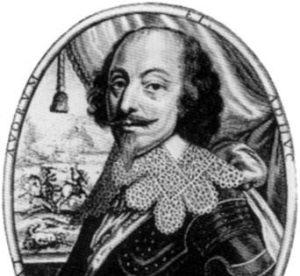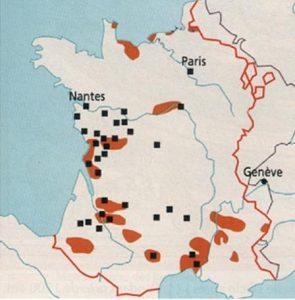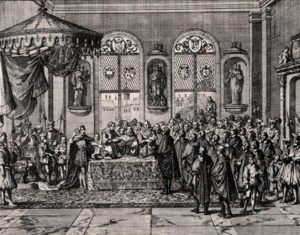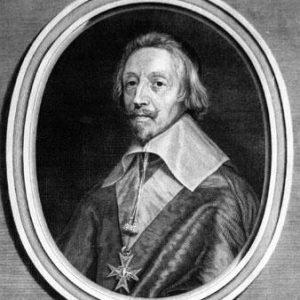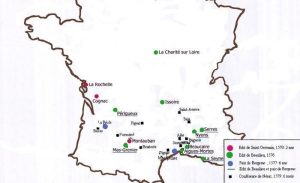Public debates : a matter to be dealt with by theologians
The quarrels of the sixteenth century gained momentum during the seventeenth century. They concerned the Church and religious service. They took the form of public debates between mainly Jesuit Catholic theologians and Protestant pastors.
Both parties tried to convince the audience of the legitimacy of their position, founding their arguments on Biblical texts and on Church tradition. There were also written quarrels that resulted in the publication of printed documents. Those highbrow feuds had a limited impact on the rate of conversions.
Missions
Their aim was to fight Protestantism with preaching and the catechisation of the population. From 1617 special mission days were organised by Capuchin clerics in overwhelmingly Reformed areas, namely in Poitou, the Cevennes, Languedoc and Dauphiné in order to convert the “heretics” as well as to protect the Catholic believers.
Each day ended with confessions and communions. These actions were fairly successful in the West generating thousands of conversions but did not obtain overall significant results.
Personal conversions
The “Organisations for the spread of the Faith” made up of clerics and pious lay people endeavoured to get personal conversions : by “bringing those who had gone astray from faith back on the right path leading to the truth.”
The first organisation was created in Paris in 1632. From 1640, other organisations were created under the supervision of the diocesan bishops.
These organisations provided financial support to those who abjured and who were rejected by their former community. They accommodated the most destitute in providing houses for newly converted Catholics. The royal power contributed to the financing of these organisations.

